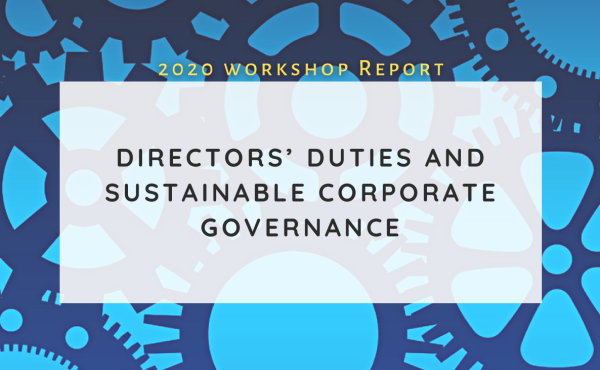Does it (still) pay off to pollute?
Issue 8 | November 2023
Greetings from Brussels,
This morning I put in contact lenses, applied some eye make-up, fried myself an egg in a non-stick pan and scrolled on my touchscreen phone, before heading out the door in my rainproof coat. Chances are pretty high that I, and likely also you, have been exposed to ‘PFAS’ before the morning coffee.
PFAS, better known as ‘forever chemicals’, are incredibly versatile and useful and can be found in countless products ranging from computer chips and EV batteries to medical technology.
Unfortunately, they are also found in the blood of humans and animals worldwide, where they accumulate and can cause serious health issues such as cancers and infertility. While the exact degree of damage is still being uncovered, alarming indications suffice for many investors to urge chemical companies to end PFAS production and for legislators to consider extensive bans.
Investors are rightfully worried, as chemical companies may face over $400bn in claims related to the environmental damages, as well as $66bn on personal injury claims in the US alone. Why do companies continue to use these harmful chemicals despite the considerable liability risks they entail?
The cautionary tale of DuPont may provide us with some answers. DuPont not only used the forever chemical PFOA (‘C8’) for decades but, once leery of its risk, discreetly disposed of it in the Ohio river or buried it in unmarked landfills. The contaminated water polluted the environment, killed many animals and led to a considerable rise of diseases in the local community. Even though awareness for the risks existed internally since the 1980s, DuPont continued, and even increased, their emissions, entangling the company in a blockbuster-worthy scandal.
Even when neglecting the evident ethical issues and concentrating solely on profitability, it seems like an extremely risky business strategy. Or was it?
As Roy Shapira and Luigi Zingales find in their study of the DuPont case, a joint failure of all crucial deterrence mechanisms actually made the decision to pollute rational from a value-maximization perspective.
Regulation should be the first barrier to prevent such behavior, prohibiting companies from releasing toxic chemicals into the environment. In this particular instance the chemical was essentially deemed safe unless the company would self-report any issues, which they had no intention of doing.
The next barrier should be the fear of litigation. While DuPont already paid over a billion in fines and settlements and is still entangled in ongoing cases, this was only due to a very unlikely chain of incidents. Back in 1984 the probability of detection was low and likely only to take place in the distant future, making the immediate profits much more appealing.
Lastly, they should have been deterred by the reputational consequences. Yet there were few people with access to the information and with an incentive to share it. Given the large time lag between the decision to pollute and its ultimate discovery, hardly anyone responsible back then has been associated with the scandal. The company itself could pull many levers to salvage its reputation, such as spinning off the bad parts of the business through restructurings and subsequently distancing themselves from it.
All in all, the DuPont scandal can be seen as a case of systemic failure with consequences that will stay with us quite literally forever. Yet it is not unparalleled, as large corporations continue to emit toxic chemicals that cause great harm and then try to suppress information about it.
Which mechanisms do we need to put an end to such harmful behavior?
Shapira and Zingales make a number of suggestions, such as changing the regulatory default for chemical approvals, taxes on secret settlements, medical monitoring doctrines in litigation, prejudgment interest and enhanced whistleblower mechanisms. They also suggest a corporate governance instrument that I want to zoom in on a little more, namely to recalibrate the directors’ oversight duty.
While DuPont’s executives’ awareness of the risks is documented in an internal memo from 1984, they continuously chose not to investigate the accumulating red flags. Instead they kept information purposefully vague and dispersed, ensuring that directors could later claim plausible deniability.
To prevent such evasion tactics, directors’ duties would need to require a documented system of risk management, removing the option to hide behind a lack of documentation. Next, these duties need to be enforceable in court, which can prove challenging in practice.
Case law in the US is evolving towards such oversight duties and the EU proposed a newly defined general duty of care, which includes sustainability matters, as well as a specific directors’ duty to oversee due diligence. While controversy mainly emerged around the general duty of care, which many argued would add more confusion than clarity, it is the oversight duty that has been struck down in the most recent negotiations.
So while we wait for the EU to make up its mind I’m curious to hear what you think about such oversight duties? Let me know in the poll below.
Let me take this opportunity to wish you all well this holiday season, and we will meet again in January 2024 for more governance insights.
Cordially yours,
Marleen
MINI POLL
Q: Directors’ oversight duties..
A) are a suitable tool to enhance accountability
or
B) will be easy to circumvent and difficult to enforce
More from ECGI on directors’ duties...
ECGI Report (Nov 2020)
NOVEMBER 11-13, 2020 Maria Lucia Passador
PREVIOUS ISSUES...
In Focus Newsletter
Issue #7 - Mind the Gender Pay Gap (October)
Issue #6 - KPop or Meme Stock (September)
Issue #5 - Exit or Voice? Time to take stock (June)
Issue #4 - Controlling Shareholders (May)
Issue #3 - Practicing Systematic Stewardship (April)
Issue #2 - The Who, What and Why of ESG (March)
Issue #1 - Responsible Capitalism (February)

Marleen Och is a PhD researcher at KU Leuven, Belgium.
She works in the field of sustainable finance and corporate governance, writing about shareholder engagement and sustainability.
Please feel free to get in touch, share your thoughts and let us know how we're doing, email Marleen.Och@ecgi.org and follow us on Twitter at @ecgiorg






